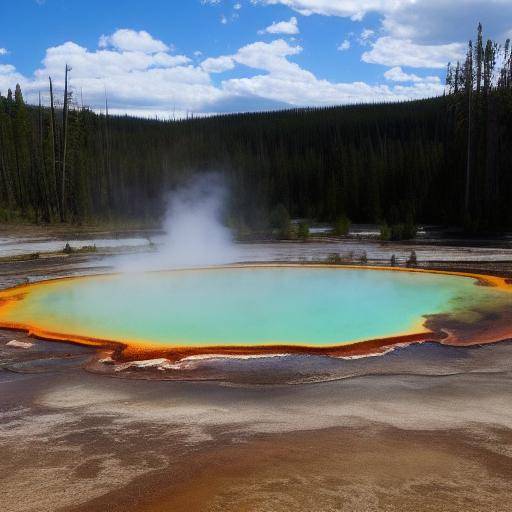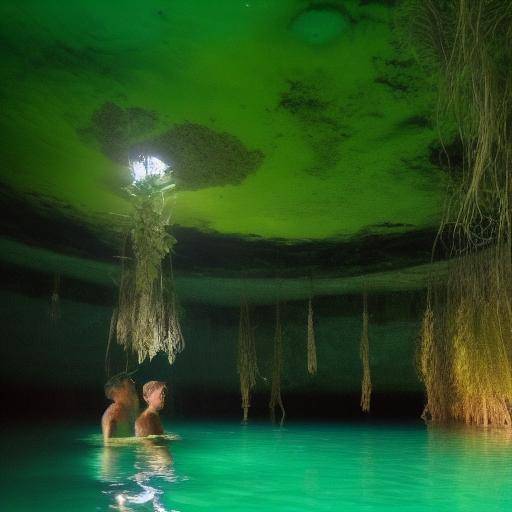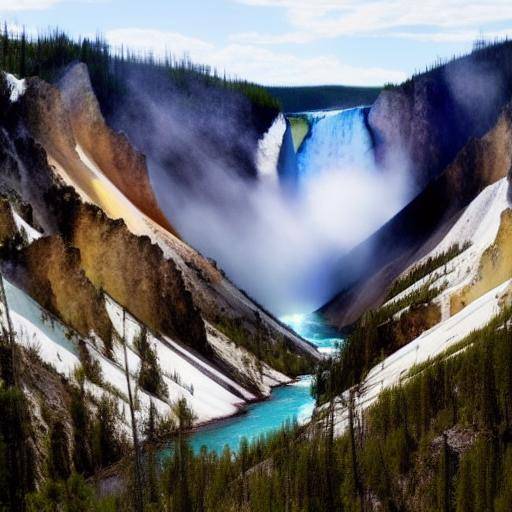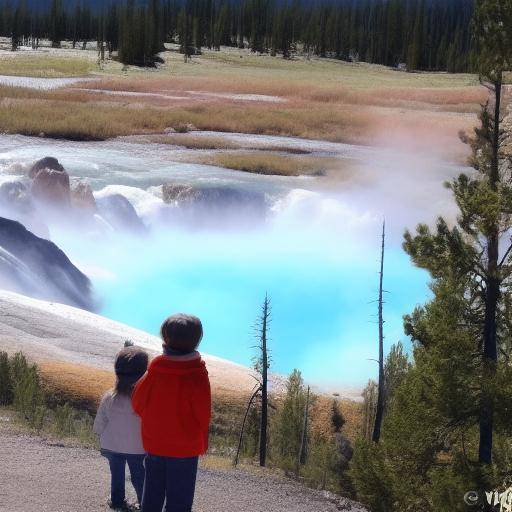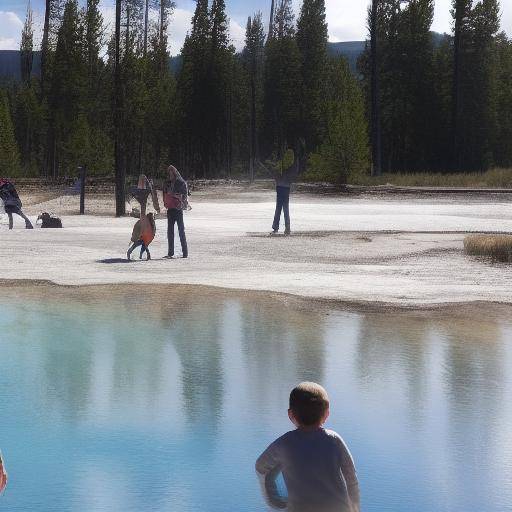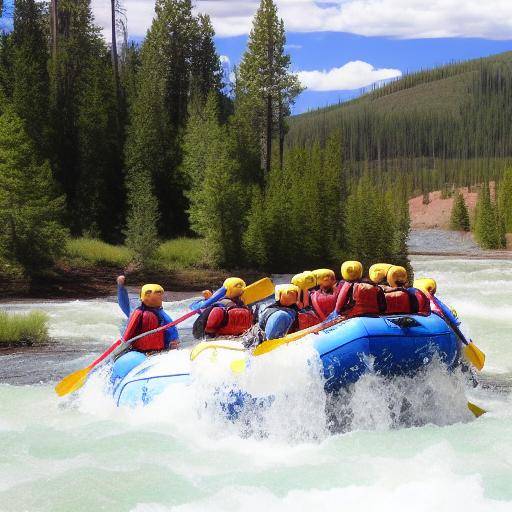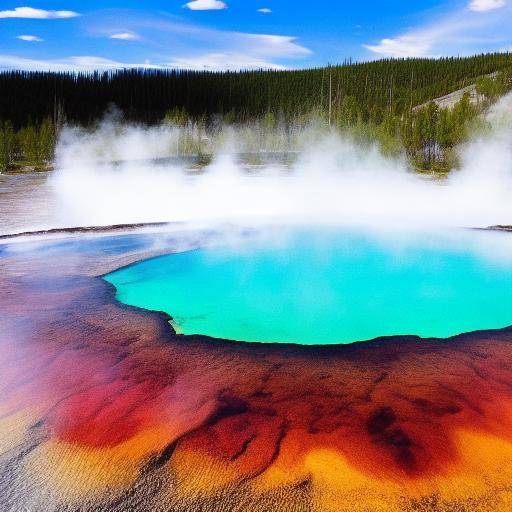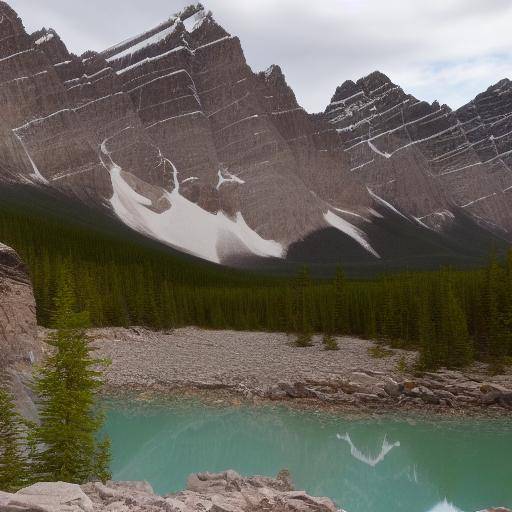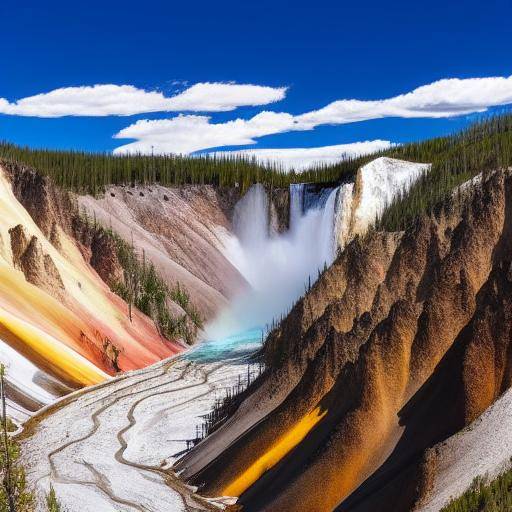
Introduction
Yellowstone, as one of the most famous national parks in the United States, hosts fascinating geological secrets that continue to amaze scientists and visitors alike. In this article, we will explore the rich geological history of Yellowstone, from the formation of its iconic geysers to the stunning volcanic landscapes. We will discover how the geological processes have shaped this park and the fundamental lessons we can learn from this natural wonder.
History and Background
Yellowstone is located in the state of Wyoming and was established as the first national park in the world in 1872. However, its geological history goes back much further in time. About 640,000 years ago, one of the largest known volcanic eruptions occurred in Yellowstone, giving rise to its distinctive landscape. Over the years, geothermal activity has continued to shape the region, creating a unique setting of geysers, thermal waters and rock formations.
Detailed Analysis
Volcanic activity in Yellowstone has been the subject of numerous scientific studies, which has revealed crucial information about the geological evolution of the earth and its processes. These studies have shed light on the formation of geysers in Yellowstone, highlighting the importance of seismic activity and the interaction between groundwater and magma heat.
In addition, the presence of a vast network of rivers and cannons in Yellowstone has triggered a deep investigation into erosion and its effects on the configuration of the terrain. This detailed analysis not only provides valuable information on the formation of volcanic landscapes, but also sheds light on the natural risks associated with geological activity in the region.
Comprehensive review
The geology of Yellowstone National Park has proven to be an inexhaustible source of knowledge, with applications that go beyond the mere understanding of geological processes. The lessons learned from Yellowstone also have important implications in terms of conservation and sustainability, as they help us to better understand the interaction between human activity and natural processes in a volcanic environment.
Comparative analysis
By comparing Yellowstone with other national parks or volcanic regions, similarities and differences stand out. Globally, only a few places exhibit a geothermal activity as impressive as the one in Yellowstone. Understanding these similarities and differences allows us to appreciate the uniqueness of Yellowstone as we contextualize its importance in the global geological landscape.
Practical Tips and Accessible Recommendations
For those interested in exploring Yellowstone from a geological perspective, it is recommended to coordinate guided tours and geothermal excursions to maximize understanding of the underlying processes. In addition, learning more about the geological history of Yellowstone can inspire greater commitment to the protection of the unique natural phenomena that the park has.
Industry Perspectives and Expert Reviews
Expert Reviews, a leading geology publication, compiled the views of prominent geologists on Yellowstone, highlighting the need to continue scientific research in the region to better understand volcanic activity and its implications for the surrounding region.
Case Studies and Real Life Applications
A recent study examined the application of geological lessons learned in Yellowstone in the mitigation of natural hazards in volcanic areas around the world. The findings highlight the importance of understanding the geology of the park and its relevance in a global context.
Future Trends and Predictions
Towards the future, geological research in Yellowstone is expected to continue as sophisticated technologies are developed to monitor volcanic activity. In addition, more emphasis is placed on education and awareness of geological processes to promote preservation and respect for nature.
Conclusion
Yellowstone's geological wealth offers valuable lessons that go beyond pure science. In understanding the formation of geysers and volcanic landscapes, we gain a deep appreciation for the complexity and beauty of the natural world. As we continue to discover and learn from Yellowstone, it is imperative that we support the conservation of this geological wonder for future generations.
Frequently asked questions
How are the geysers formed in Yellowstone?
Geysers in Yellowstone are formed from the interaction between groundwater and heat from the magma near the surface. This combination creates a pressure that eventually results in the spectacular eruptions that we associate with geysers.
What is the geological importance of Yellowstone worldwide?
The importance of Yellowstone lies in its exceptional volcanic and geothermal activity, which provides scientists with a unique opportunity to study and understand these processes. In addition, the lessons learned in Yellowstone have global implications in terms of geological research and conservation of volcanic environments.
What are the major challenges associated with geological activity in Yellowstone?
One of the greatest challenges is the need for constant monitoring to anticipate and mitigate natural risks, such as volcanic eruptions or seismic tremors. In addition, balancing the preservation of the natural environment with the growing influx of visitors represents a continuous challenge for park managers.
What measures are being taken to protect the unique geology of Yellowstone?
The park authorities implement ongoing monitoring programs to detect any signs of unusual volcanic or geothermal activity. In addition, public education is promoted on the importance of preserving these unique natural phenomena.
What is the role of geological activity in the configuration of the landscape of Yellowstone?
Geological activity has played a fundamental role in the creation of the imposing cannons, rock formations and geysers that define the landscape of Yellowstone. This continuous interaction between geology and topography has led to a truly exceptional natural environment.
What opportunities does Yellowstone offer for geological research and scientific education?
Yellowstone offers researchers and educators the opportunity to study unique geological processes in the front row, which can significantly enrich the understanding of geology and the conservation of nature worldwide.
In short, the geology of Yellowstone is an inexhaustible source of knowledge that not only promotes scientific research, but also educates us about the importance of protecting and preserving our rich geological heritage for future generations.

